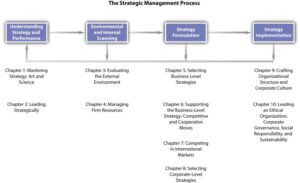
Venture capital pitch deck sets the stage for this enthralling narrative, offering readers a glimpse into a story that is rich in detail with a focus on how startups can effectively communicate their potential to investors. A well-crafted pitch deck is a critical tool for entrepreneurs seeking funding, as it encapsulates the vision and strategy of a business in a compelling format.
This guide not only defines what a venture capital pitch deck is but also delves into the key components that make it effective, from essential slides to innovative strategies that can capture investor interest. Understanding the nuances of creating a persuasive pitch deck can significantly influence the success of securing funding.
Introduction to Venture Capital Pitch Deck
A venture capital pitch deck is a brief presentation, typically created using PowerPoint or similar software, that provides potential investors with an overview of a startup’s business plan. It serves as a visual accompaniment to a verbal presentation and is crucial for attracting funding. The importance of a pitch deck in the startup funding process cannot be overstated; it is often the first impression investors have of your business idea.
An effective pitch deck can make the difference between securing investment and being overlooked by potential backers.To create a compelling pitch deck, it’s essential to include several key elements. These include a clear articulation of the business idea, the market opportunity, the competitive landscape, financial projections, and the team behind the startup. Each of these components plays a pivotal role in conveying the startup’s value proposition.
Components of a Pitch Deck
A well-structured pitch deck typically contains the following essential slides:
- Cover Slide
- Problem Statement
- Solution Overview
- Market Opportunity
- Business Model
- Traction
- Competitive Analysis
- Financial Projections
- Team Introduction
- Closing Slide
The problem and solution slides are particularly significant, as they articulate the core issue your startup addresses and how your solution uniquely solves that problem. Presenting market analysis effectively involves showcasing industry trends, size, and growth potential, which can significantly bolster your case to investors.
Business Innovation in Pitch Decks
Highlighting business innovation is critical when crafting a pitch deck. Investors are keen to see how your startup stands out from the competition, and showcasing innovation can capture their interest. For example, companies like Airbnb have effectively used pitch decks to emphasize their disruptive business models. They illustrated how their platform transformed the hospitality industry by enabling homeowners to rent out spaces, thereby creating a new market segment.To illustrate unique selling propositions, it’s effective to use visuals and real-world analogies that resonate with the audience.
Infographics, charts, and case studies can provide clarity and make the innovation more tangible.
International Business Considerations
When tailoring a pitch deck for international investors, it’s essential to consider cultural differences in communication styles and business practices. Understanding the target audience’s expectations can help in crafting a more engaging narrative. For instance, using data to support claims may be more compelling in some cultures than in others, where storytelling might be more valued.Cultural considerations can influence everything from language and imagery to the tone of the presentation.
Additionally, being aware of international market trends can significantly impact investment pitches, as investors are often looking for opportunities that align with global shifts and developments.
Effective Business Presentations
Delivering an engaging pitch presentation requires a blend of preparation and performance skills. Techniques such as practicing in front of a small audience can help refine your delivery and boost confidence. Organizing a checklist for preparation can ensure that no critical elements are overlooked.Utilizing visuals effectively in a pitch deck enhances understanding and retention. High-quality images, consistent branding, and clear graphs are essential for ensuring the audience remains engaged and comprehends the key points being made.
Marketing and Sales Strategy in a Pitch Deck
Showcasing marketing strategies within a pitch deck involves presenting a clear framework that Artikels how the startup plans to reach its target audience. This can include digital marketing tactics, social media engagement, and partnerships. It’s also crucial to present sales projections convincingly, supported by market data and research.Customer acquisition strategies should not be overlooked, as these are vital for demonstrating how the startup plans to build its customer base and achieve financial success.
Risk Management in Pitch Decks

Identifying and presenting risks in a pitch deck is essential for building credibility with investors. Startups should Artikel potential risks, such as market competition or technological challenges, and discuss mitigation strategies. This transparency can reassure investors of the startup’s preparedness and strategic thinking.Common risks faced by startups often include cash flow issues, regulatory hurdles, and market disruptions. Addressing these proactively in a pitch can help build trust and confidence among potential backers.
Business Networking Strategies
Networking plays a critical role in securing venture capital, as it allows entrepreneurs to establish connections with potential investors. Attending key networking events, such as startup conferences and pitch competitions, can provide opportunities to meet investors and gain exposure.Building relationships with investors involves more than just initial meetings; it’s about nurturing those connections over time. Following up with investors after meetings or events and keeping them updated on progress can lead to fruitful partnerships.
Team Building and Management
Showcasing the management team within a pitch deck is crucial, as investors often invest in people as much as in ideas. Highlighting team strengths, backgrounds, and relevant experience can instill confidence in investors regarding the startup’s potential for success.Successful startups, such as Slack and Dropbox, have strong management teams that have effectively communicated their vision and capabilities in pitch decks, demonstrating the importance of leadership in entrepreneurial ventures.
Preparing for Investor Questions
Anticipating common questions investors may ask after a pitch is a vital part of preparation. Investors often seek clarity on financial assumptions, market strategies, and competitive positioning. Preparing concise and confident responses to these questions can significantly improve the overall impression of the pitch.Techniques for addressing challenging questions include staying calm, acknowledging the question’s validity, and providing well-thought-out answers. This approach can showcase both knowledge and professionalism.
Utilizing Feedback from Pitch Decks
Gathering and utilizing feedback after pitch presentations can lead to continuous improvement. This process involves soliciting input from investors, mentors, and peers, which can highlight areas for refinement.Methods for iterating and improving a pitch deck may include revising slide content, adjusting the narrative flow, or enhancing visual elements. Continuous improvement in presentation skills is essential for entrepreneurs seeking to make a lasting impact on potential investors.
The Role of Business Outsourcing
Outsourcing can enhance operational efficiency, which is a key point to emphasize in a pitch deck. Tasks such as accounting, customer support, and IT can be effectively outsourced, allowing startups to focus on core competencies. Potential benefits of outsourcing include cost savings and access to specialized expertise. However, it’s also crucial to identify potential risks, such as loss of control over quality and communication challenges.
The Impact of Workplace Communication

Clear communication is paramount in a pitch deck. Ensuring that the message is easily understood among diverse audiences is vital for engagement and effectiveness. Techniques for achieving this include using straightforward language, avoiding jargon, and providing context for complex ideas.Effective communication can significantly influence investor perception, fostering a sense of trust and transparency. Presenting information clearly helps to ensure that the audience grasps the startup’s vision and potential, paving the way for successful investment outcomes.
Conclusion
In conclusion, a strong venture capital pitch deck is more than just a presentation; it’s a powerful storytelling tool that can pave the way for successful funding opportunities. By incorporating essential elements and addressing investor concerns, entrepreneurs can enhance their chances of making a lasting impression. Remember, continuous improvement and adaptation to feedback are vital in refining your pitch for future endeavors.
FAQ Guide
What is the ideal length for a pitch deck?
The ideal length for a pitch deck is usually around 10-15 slides.
How should I tailor my pitch deck for different investors?
Tailor your pitch deck by focusing on investors’ specific interests and concerns based on their previous investments.
What are common mistakes to avoid in a pitch deck?
Avoid overcrowding slides with information, using jargon, and failing to clearly articulate your value proposition.
How important is the design of the pitch deck?
The design is very important; a visually appealing deck can enhance understanding and retention of information.
Should I include financial projections in my pitch deck?
Yes, including financial projections is crucial as it demonstrates your business’s potential for growth and profitability.




